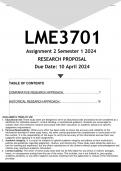College aantekeningen
Alle hoorcolleges Ontwikkelingsneuropsychologie (samenvatting + aantekeningen)
- Vak
- Instelling
Alle colleges samengevat, inclusief aantekeningen. Ik heb alle colleges zelf bijgewoond (behalve de eerste twee, maar die zijn ook geen tentamenstof).
[Meer zien]












